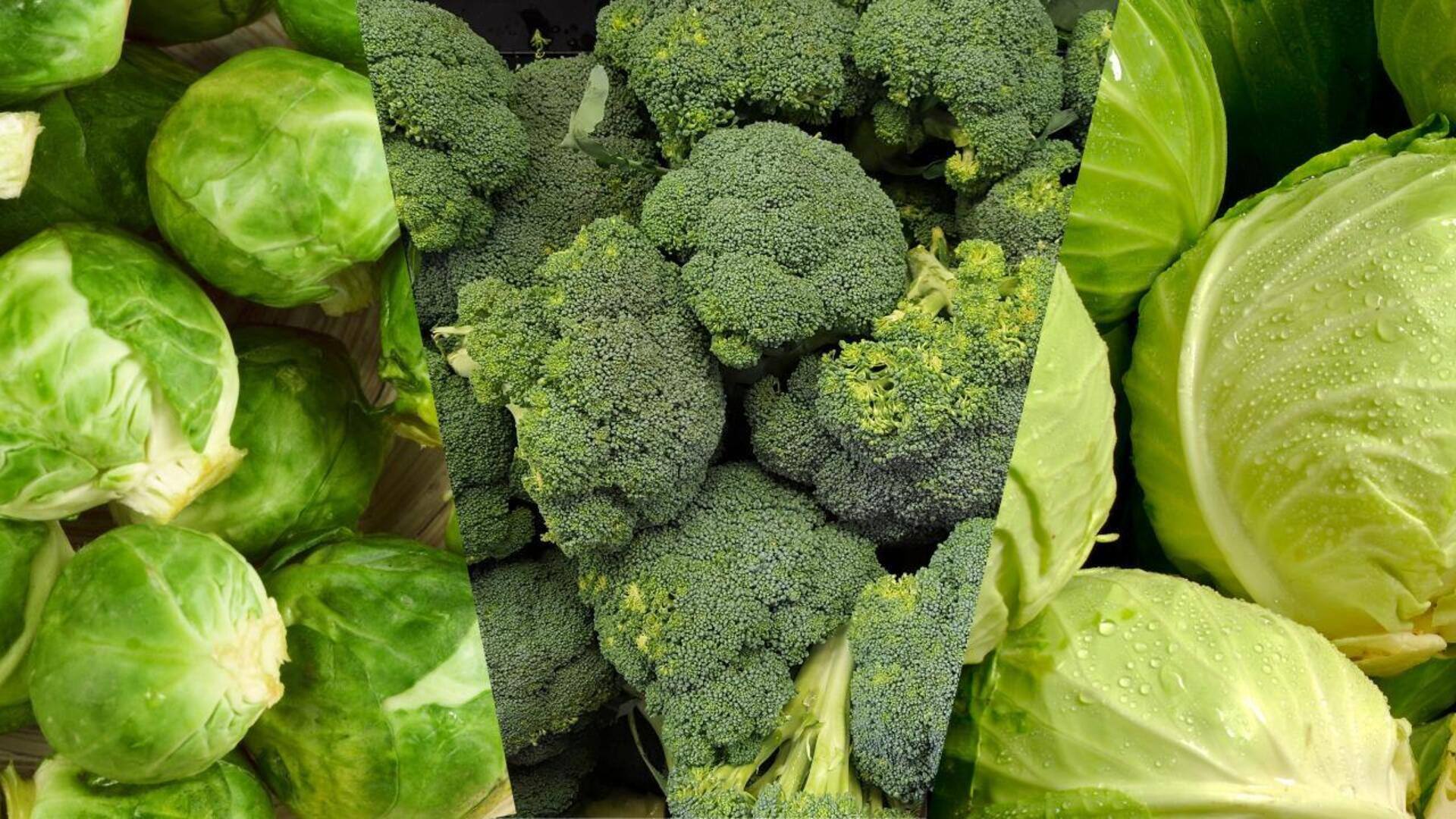
Comparing cabbage and broccoli: Which is healthier?
What's the story
Cabbage and broccoli are two popular vegetables that are often compared for their health benefits. Both belong to the cruciferous family and are known for their nutritional value. While they have some similarities, they also have unique qualities that make them beneficial in different ways. Knowing these differences can help you make informed dietary choices. Here's a look at the health benefits of cabbage and broccoli.
#1
Nutrient content comparison
Cabbage is rich in vitamin K, providing over 85% of the daily recommended intake per cup. It also contains vitamin C and fiber but has comparatively fewer calories than broccoli. Broccoli is a powerhouse of nutrients, providing more vitamin C than cabbage and high amounts of vitamin A and folate. Both vegetables are low-calorie options but serve different nutrient profiles.
#2
Antioxidant properties
Broccoli is famous for its high antioxidant content, including sulforaphane, which is known for its cancer-fighting properties. The antioxidants in broccoli help reduce oxidative stress in the body. Cabbage also has antioxidants such as anthocyanins (in red cabbage) that help protect cells from damage. While both vegetables help fight oxidative stress, broccoli is usually considered more potent due to its higher antioxidant levels.
#3
Digestive health benefits
Both cabbage and broccoli are high in fiber, which is essential for keeping your digestive system healthy. Fiber aids in regular bowel movements and prevents constipation. Cabbage has a slightly higher fiber content than broccoli per serving, but both can be beneficial additions to a fiber-rich diet. Eating either vegetable regularly can improve gut health by promoting beneficial bacteria growth.
Tip 1
Versatility in cooking
Cabbage is extremely versatile and can be eaten raw in salads or cooked in soups and stews. Its mild flavor goes well with many dishes without overpowering other ingredients. Broccoli can be steamed, roasted, or added to stir-fries for a crunchy texture and vibrant color. Both vegetables retain most of their nutrients when cooked briefly or steamed instead of boiled.